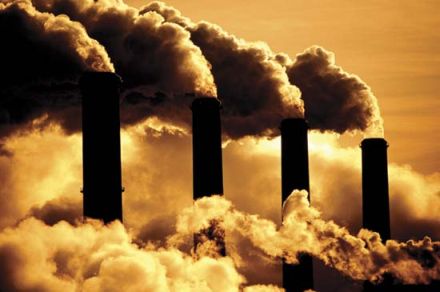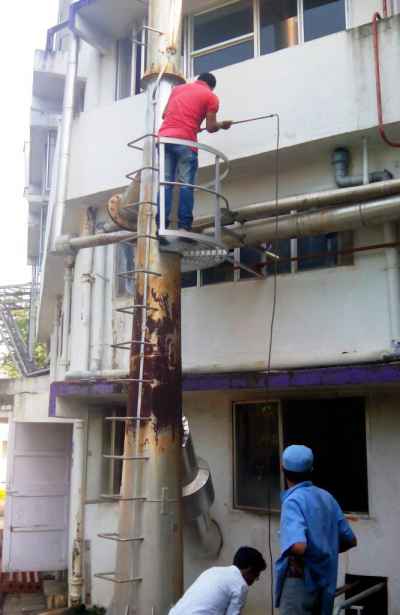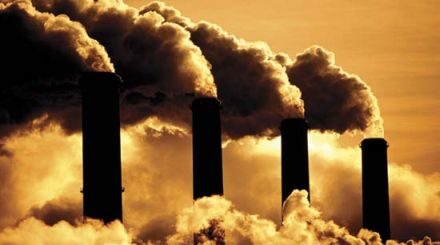Stack Emission Monitoring & Testing
Stack emissions monitoring is a critical requirement for industrial air pollution control, ensuring compliance with environmental regulations like CPCB and SPCB standards.
With over 25 years of experience in environmental monitoring, Perfect Pollucon Services has worked with industries across India to help them achieve emission compliance through precise stack testing, real-time monitoring, and advanced analytical techniques.
As regulations become stricter and enforcement intensifies, industries must ensure accurate emission measurement, proper data reporting, and compliance to avoid penalties and environmental harm.
Stack Emission monitoring is referred to as Stack emission testing, stack emission monitoring, stack sampling, Source Emission Monitoring or Source Testing. It is a process to measure the emission of industrial waste or pollutants emitted into the atmosphere. The pollutants emitted from the stack can be solid, gaseous, liquid organic or inorganic.
What is Stack?
The stack is nothing but chimney which is used to disperse the hot air at a great height, emissions & particulate matters that are emitted from the various types of stacks like boiler, flue gas etc. At these heights, the polluted air disperses in a very large area so that concentrations at the ground are within permissible limits and not harmful for humans, animals and vegetation.

There are several types of flue-gas stack based on fuel injections. Eg. DG set stack, flue gas stack, process stack, furnace stack, boiler stack, chimney etc.
Why Stack Emission Monitoring is Essential?
Over the years, Perfect Pollucon Services has observed that many industries underestimate the impact of improper emissions monitoring. Some of the key challenges include:
- Failure to meet CPCB-prescribed emission limits, leading to legal penalties.
- Inaccurate monitoring techniques, causing misleading reports and regulatory non-compliance.
- Unoptimized air pollution control systems, leading to excess particulate matter and harmful gas emissions.
Real-World Insight: In one of our projects, a manufacturing unit was struggling with frequent regulatory violations due to inaccurate stack monitoring methods. By implementing continuous emissions monitoring (CEMS) and refining their air pollution control strategies, we helped them achieve compliance and reduce particulate emissions by 40%.
By Perfect Pollucon Services
Industry: Data Center (Power Backup & Emission Compliance)
Challenge: High PM2.5 & NOx emissions, compliance tracking, regulatory risk
Solution: CEMS Implementation, fuel optimization, automated reporting
Outcome:
- ✅ 100% CPCB compliance
- ✅ 30% PM2.5 reduction
- ✅ Improved fuel efficiency
Key Learnings:
- 🔹 Real-time monitoring enables immediate corrective actions.
- 🔹 Automated compliance tracking eliminates reporting errors.
- 🔹 Fuel quality optimization significantly reduces particulate emissions.
- 🔹 Proactive maintenance ensures long-term compliance.
CPCB guidelines for Stack Height
Chimney, Boiler, DG set, DG exhaust pipe etc.Stack height calculationplays an important role in determination of dispersion of pollutants in upper level of air relevant to local building height.
Chimney / Boiler/ Stack Height Calculation Formula
H = h + 0.2 * √KVA
Where,
H = Total height of stack in metre
h = Height of the building in metres where the generator set is installed
KVA = Total generator capacity of the set in KVA
Based on the above formula stack height to be provided can be categorized as follow: This is inline withCPCB guidelines for stack height.
| Sr no | For Generator Sets | Total Height of stack in metre |
| 1 | 50 KVA | Ht. of the building + 1.5 metre |
| 2 | 50-100 KVA | Ht. of the building + 2.0 metre |
| 3 | 100-150 KVA | Ht. of the building + 2.5 metre |
| 4 | 150-200 KVA | Ht. of the building + 3.0 metre |
| 5 | 200-250 KVA | Ht. of the building + 3.5 metre |
| 6 | 250-300 KVA | Ht. of the building + 3.5 metre |
Stack Emission Monitoring & Testing by Perfect Pollucon Services (Marathi)
This video explains why stack Emission testing or Source Emission Testing is important and how to carry out Industrial Stack Monitoring process.
Common Mistakes in Stack Emission Monitoring
Based on our extensive experience, we have identified the most common mistakes industries make in stack emissions monitoring:
🔸 Infrequent or inadequate testing – Many industries rely on outdated, infrequent stack tests that fail to capture emission trends.
🔸 Ignoring calibration of monitoring equipment – Inaccurate data can lead to misleading compliance reports.
🔸 Poor sampling techniques – Incorrect sampling leads to underreporting or overreporting of emissions.
🔸 Non-compliance with specific pollutants – Many industries only test for major pollutants but overlook specific ones like NOx, SOx, or heavy metals.
🔸 Lack of real-time monitoring (CEMS) – Relying solely on periodic manual sampling instead of real-time monitoring increases the risk of undetected violations.
By addressing these challenges, Perfect Pollucon Services has helped industries avoid fines, improve environmental performance, and ensure sustainable operations.
What are the Requirements of Stack Emission Monitoring & Testing?
Perfect Pollucon Services is a stack emission testing company having more than 30 years of experienced experts. They know how to carry out these tasks in an efficient manner.
• To determine the quality and quantity of air pollutants emitted by the source
• To measure the effectiveness of pollutants controller equipment before and after installation
• To measure the effectiveness of pollutants controller equipment for a given condition
• To compare results with emission standards to take required action
• To compare changes in emission with the changes in processes or raw materials
Stack Monitoring Kit or Equipment
• Stack Monitoring kit used to find gaseous pollutants in emission from a stationary source such as Boiler Chimney, Process outlets, Scrubber outlets Etc by stack emission testing companies.
• It also can be used to determine physical parameters such as exit emission velocity from stack, temperature & flow of Air emission.
• Determination of total particulate matter using isokinetic Sampling Technique.
• Analysis of gaseous contaminants like SO2, SO3, NOx, Cl2, HCL, NH3 etc by using a gas monitoring system.
Stack emission monitoring Equipment is divided into Four Parts
Velocity Measuring Kit
Consist of the inclined manometer, Digital Temperature Indicator, ‘S’ type Pitot tube & thermocouple.
Particulate Sampling Train
Thimble Holder & set of nozzles, condenser, Rotameter, Dry Gas Meter, Time indicator & power source for synchronizing vacuum pump with sampling train.
Multigas Sampling Train
Consists of four glass impingers housed in FRP casing with Rotameter for gaseous sampling.
Vacuum pump
Diaphragm type vacuum pump of suitable capacity.
Stack Emission Monitoring & Testing Procedure
Measurements of these pollutants follow specific predefined stack emission testing procedures and protocols to ensure accurate and representative data of the total amount of pollutants emitted into the atmosphere from a given source in the given time is collected.

Learn more about Stack Emission monitoring Methods
It is the most Important that sample collected must truly represent the conditions of flue gas stack. Accurate measurement of Pressure, moisture, humidity, gases, velocity, temperature and Particulate matter is required during Industrial stack monitoring procedure.
It is also required to measure accurately rate of flow gases accurate of weight and volume of samples collected.
Also When a wide range of particles are present in emission flow, there is a possibility that only smaller particles can enter into sampler inlet and larger particles may not enter due to their inertia. So to avoid this situation Calculating isokinetic ratio i.e. Isokinetic Stack Sampling method can be helpful to achieve accurate results in gas boiler emission monitoring.
IsoKinetic Stack Sampling
Read More about how to select traverse Point or Iso-kinetic Stack Sampling in Stack Monitoring.
Stack Emission Measurement Parameters
Collected Sample then tested and analysed in a laboratory for Parameters (Stack Emission Monitoring Parameters) NOx (Oxides of Nitrogen), CO2 (Carbon Dioxide), CO (carbon monoxide), SO2 (sulphur dioxide), VOC (Volatile Organic Compound) etc.
Stack Emission Testing Frequency
The frequency for stack monitoring is always directed in Consent to operate for depending on their industry type and plant capacity. Larger plants will have to monitor stack more frequently than small plants. For each industry, there is different frequencies are defined on CPCB website depending on their consent categories. They have covered industries like cement, thermal power, integrated iron and steel, fertilizer, Nitric acid, Sulphuric acid, Primary aluminium, Carbon black, Calcium carbide and Oil Refinery, etc.
What is The Limit of PM Emission For Stack Monitoring?
As per CPCB or Indian standards for Industrial Stack Monitoring the flue gas emission from boiler stack, DG set emissions, the furnace should not exceed the limit for Particulate matter beyond 150 mg/Nm3. However, this limit can vary depending on the industry type.
Read more about Fugitive Emission Monitoring and Testing
Stack Monitoring Parameters and Standards / Limits as per CPCB for Boiler & DG Sets Emission
Please refer below table of Stack Monitoring Parameters and Standards / Limits as per CPCB for Boiler & DG Sets Emission:
Sr no | Stack Monitoring Parameters for Boilers and DG Sets | Stack Monitoring Limits / Standards As per CPCB (in mg/Nm3) |
1 | Particulate Matter (PM) | 150 |
2 | Sulphur Dioxide (SO2) | 40 |
3 | Oxides of Nitrogen (NOx) | 25 |
4 | Total Fluoride (F) | 25 |
5 | Mercury (Hg) | 0.2 |
6 | Chlorine (Cl) | 15 |
7 | Hydrochloric Acid Vapor & Mist (HCl) | 35 |
8 | Sulphuric Acid Mist (H2SO4) | 50 |
9 | Carbon Monoxide (CO) | 1% |
10 | Lead (Pb) | 10 |
Recently, in Stack Emission Monitoring below mentioned two technologies introduced to measure online stack emission:
Piezoelectric Monitor – Industrial Stack Monitoring Equipment
In this equipment, particles are electrostatically deposited on to a piezoelectric sensor by stack emission testing companies.
Beta Attenuation Monitor – Industrial Stack Monitoring Equipment
In this equipment, the particulate sample is filtered using a continuous filter tape and the mass of particulates filtered out is determined by measuring its radiations.
Learnings from 25 Years of Stack Emissions Monitoring
Through our 25+ years of expertise in stack emissions monitoring, Perfect Pollucon Services has identified key industry trends:
✅ Industries using Continuous Emission Monitoring Systems (CEMS) report fewer compliance issues.
✅ Regular calibration and validation of monitoring equipment prevent inaccurate data reporting.
✅ Proactive emission control leads to a significant reduction in air pollution penalties and operational shutdown risks.
✅ Data-driven decision-making improves efficiency and long-term environmental sustainability.With our extensive experience, we ensure that industries not only meet but exceed emission compliance standards, safeguarding both regulatory approval and environmental responsibility.
How Perfect Pollucon Services Ensures Accurate Stack Emission Monitoring
At Perfect Pollucon Services, we specialize in advanced stack emission monitoring techniques to help industries maintain compliance effortlessly. Our services include:
✅ Regulatory Compliance Testing – Ensuring your emissions meet CPCB & SPCB prescribed limits.
✅ Continuous Emission Monitoring (CEMS) Implementation – Real-time tracking of pollutants like SO₂, NOx, PM, and VOCs.
✅ Emission Data Analysis & Reporting – Generating detailed reports for audits and environmental impact assessments.
✅ Air Pollution Control Consultation – Optimizing control measures to minimize emissions efficiently.
✅ Periodic Stack Testing & Equipment Calibration – Ensuring long-term accuracy and compliance readiness.We provide customized emission monitoring solutions to industries across manufacturing, power, cement, and other sectors, ensuring 100% regulatory compliance and improved air quality management.
Stack Emission Monitoring & Testing Services by our Company
Perfect Pollucon Services offer Stack emission testing and Source Emission monitoring services to keep a check on industrial waste stream that is released into the atmosphere.
Every industry or manufacturing company has to notify their stack emission levels to the pollution control board. We carry out various tests to determine pollutants concentrations, emission rate or parameter in the Gas Boiler emission monitoring process. We offer to test for benzene testing, toluene testing, heavy metal testing in air, VOC emission monitoring and VOC Testing and analysis.
We offer Environmental Services.
✅ Reviewed by Our Expert Leadership Team
This service offering is created and reviewed by our senior team of environmental professionals with 10–40 years of experience in pollution control, regulatory compliance, and monitoring services.

Tanaji S. Gajare
Founder & Chairman
40+ years in air & water monitoring, sustainability leadership

Anil Shelke
Executive Director
30+ years in compliance, audits, and ETP/STP operations

Kunal Gajare
Environmental Engineer
10+ years in stack monitoring, MPCB/MoEF clearances, EIA
Frequently Asked Questions:
Stack monitoring system used for detecting and measuring of harmful gases released into atmosphere from stack, chimneys, DG stacks, etc. Process involves sampling of gases from stack and monitor in real time to keep an eye on volume of gas emissions.
Stack Emission monitoring procedure includes tasks of Measurement, testing, sampling and analysis. Onsite determination of physical parameters of flue gases such as temperature, flow and pressure also involved in Stack emission monitoring.
Stack Monitoring is the process of testing the harmful gases emitted from stacks to keep a check on the pollutants released in the air. The top pollutants that stacks emit are Carbon Monoxide(CO), Oxides of Sulphur (SO2,SO3),Methane Gas, and oxides of Nitrogen i.e. SOx and NOx, and hydrocarbon compounds
Stack emission is basically gases released into the air from boiler stack, chimneys or DG set stack etc. from various industries after incineration process i.e. method to remove or burn the harmful gases before releasing to environment.
Stacks are large chimneys designed to emit and disperse hot air, particulate matter, and pollutants from industries into the upper atmosphere so that they do not create a danger to life on the ground. There are several types of stacks in use today, such as: Boiler stacks. Flue gas stacks, etc.
There are many types of devices used in Stack emissions based on the objective. Most commonly used devices are:
1) Iso-Kinetic Sampling: Manual and Automatic
2) Pollutant Specific: PM 2.5 and PM10, Sulfuric acid, Dioxin Furan, Halogens and Halides etc. measurement instrument
3) Specific Gas Sampling Instruments: NOx, SO2, VOC, Flue Gas Analyzers, Electrochemical Sensor based analyzers, etc.
4) Metal Emission Sampling Instruments
5) Specific Parameters: Pressure, Flow, Temperature, Velocity, Relative Humidity measurement instruments
Stack monitoring is vital for assessing and controlling industrial air emissions, providing accurate data on the type and quantity of pollutants released into the atmosphere from industrial stacks.
This information is crucial for regulatory compliance, environmental impact assessments, and the development of effective pollution control strategies, contributing to the protection of air quality and public health.
Stack monitoring involves the measurement of various parameters to assess industrial emissions accurately. Key parameters include pollutants such as sulfur dioxide (SO2), nitrogen oxides (NOx), particulate matter (PM), carbon monoxide (CO), and volatile organic compounds (VOCs), ensuring a comprehensive understanding of the environmental impact of industrial activities and facilitating regulatory compliance.
A stack monitoring kit is a comprehensive set of tools and equipment designed for the systematic collection and analysis of emissions from industrial stacks.
Typically including gas analyzers, particulate samplers, and data loggers, these kits enable environmental professionals to conduct accurate and efficient stack monitoring, ensuring compliance with emission regulations and facilitating the development of effective pollution control measures.
Stack monitoring is typically performed by installing sampling equipment on or near industrial stacks to collect samples of emitted gases and particulate matter.
These samples are then analyzed using various techniques, such as gas analyzers and particulate samplers, to measure the concentrations of specific pollutants and ensure compliance with environmental regulations.
DG stack height is typically calculated using dispersion modeling, considering factors such as emission rates, atmospheric conditions, and surrounding structures.
Mathematical models like ISCST3 may be employed, and compliance with local environmental regulations is essential for accurate calculations.
Share this article with your friends and family!
Perfect Pollucon Services is one of the leading Stack testing Company.
Read More about what we cover in environmental monitoring services?


Please advise what are limits/ specifications of DG Set/ Thermic Fluid Heater stack emission in mg/Nm3
Required for UP Pollution control bOARD.
Regards.
Thank you for the Question.
You need to check those emission limits details in your “Consent to operate” provided by pollution control board.
Thanks
How to sampling volatile organic compound in stack? Method?
Hi Rizal,
You can refer to below mentioned article: http://www.cleanair.com/epamethods/Air-Test-Methods/m-18.php
Stack monitoring sampling
simple way to determine stack velocity and flow rate and spfication or procedure for scrubber monitoring
Hi Chandrashekhar,
Thank you for your comment.
There is no simple way to measure stack velocity and flow rate. There are specific requirements for equipments by CPCB which needs to be followed.
Keep coming for more.
For 70KVA DG set is required to get stack monitoring certication is available at aurangabad Maharashtra
Hi Vijay,
Request you to contact us on 9930180059 for assistance.
Hiii,
We have 125Kva DG set, where should be sampling of emission to be done??? sample collection port calculation etc.
pls help
Hi Manish,
Request you to contact us for more information. we would love to help you.
Thank you.
what are quality checks we can do on stack emission,what is the expected CO2 correction in boiler .is it mandetory to mention in the data sheet.
sir , We have PNG RTHF 18 mtr stack , where should be made sampling collection port???
plz suggest.
Hi Pramod,
Please contact 9930180059 for more information. Thank you.
what is stack height to be consider for 750, 1000, 1500 KVA & which guideline to be follow?
Dear Abhishek,
The Central Pollution Control Board, New Delhi evolved the following formula for calculating minimum stack height to be provided to each Diesel Generation set for industrial, commercial, domestic and other purposes.
H = h + 0.2 * capacity of DG in KVA.
H = Total height of stack in meter.
h = Height of the building in meters where the generator set is installed.
KVA = Total generator capacity in the set of KVA.
Thanks,
Perfect Pollucon Services Team
H = h + 0.2 * capacity of DG in KVA this formula to be corrected as ;
H = h + 0.2 * √(capacity of DG in KVA)
Thank you Ganesh for Pointing out, but square root sign is already there. Maybe some devices are not able to show it properly.
Anyways, Thank you.
Dear Sir,
I am a PhD researcher based at Staffordshire University conducting research based on the measurement of particulate from stationary sources. I am currently conducting a short survey in the industry and would like to ask for your participation.
I appreciate that this email may not have reached the right person but could I ask that this is passed to the relevant person in your organisation.
I have included a copy of a link to the survey.
https://www.esurveycreator.co.uk/s/dustparticulate
I understand that you are busy but I would appreciate if you could find time to complete the survey.
Should you require any further information, please do not hesitate to contact me.
Kind regards,
Daniel
are you MOEF APPROVED or tie up with Moef Approved laboratory
Hello Ashwini, We are tied up with MOEF Approved lab.
hi
I require small information we have established 33 meters height DG Stack for 2850KVA DG Sets 2 nos, want to know the tolerances for Stack verticality. please help me in this regard.
Thanks in advance
Hi Subrahmanyam,
Sure, you can get in touch with us on 9967436537 for more information and quotation.
Thank you, PPS Team
One of our client is looking for a monitoring device for stack monitoring for boiler. They do not want to transmit any data. The data generated shell be used for inhouse reference. Boiler capacity is 2 Ton/hr.
Hi Rakesh,
Please call us on 9930180059 / 9967436537 for quick response.
Thank you,
PPS team
Hi.
I have a problem in calculating the concentration of particulate matter from the chimney in dry conditions (mg/Nm3). We sample chimneys dust with nozzle on dried filters. after gravimetry we use the below formulas to calculate particles concentration:
C = M/V
Cw = C×(T/TN) ×(PN/P)
Cd =Cw ×(100/(100-F))
Where M is:The total mass of dust collected on the filter
V: The volume of air sampled
Cw : Normal particle concentration in wet conditions in milligrams per cubic meter
Cd :Normal particle concentration in dry conditions in milligrams per cubic meter
Where Cw is the concentration of particulate matter from the chimney in dry conditions (mg/Nm3)
F: Absolute humidity
Could you please guide me is these formula correct?
I need help to know how I can calculate particles concentration correctly.
Hi,
You seem to be on the right track with the formulas. To make sure your concentration calculations are accurate:
Ensure the units of temperature (in Kelvin), pressure, and humidity match the expected standards.
The volume V should account for any corrections if the sampled air was not at the standard temperature and pressure during sampling.
Ensure the sample volumes are corrected for temperature and pressure if measured in non-standard conditions.
Verify the humidity correction based on accurate absolute humidity measurements.
Team PPSThane
hi
for Pin Oil & IPA what are the Stack Monitoring Parameters and Standards, and what are the requirements for the duct and fans is there any requirements
For Pin Oil and IPA (Isopropyl Alcohol), the specific stack monitoring parameters and standards may vary depending on the local regulations and guidelines. However, some common parameters that are typically monitored include particulate matter (PM), volatile organic compounds (VOCs), and combustion gases such as carbon monoxide (CO) and nitrogen oxides (NOx). The standards for these parameters are usually set by environmental agencies to ensure compliance with air quality standards and to minimize the impact of emissions on human health and the environment.
Regarding the requirements for ducts and fans in the context of stack emissions, it is important to ensure that the ducting system is properly designed to effectively capture and convey the emissions from the source to the stack. The ducts should be sized appropriately to maintain a consistent flow and minimize pressure drop. Additionally, the fans should be adequately sized and positioned to provide sufficient airflow and ensure proper stack exhaust.
It is crucial to consult the specific regulations and guidelines applicable to the region where the Pin Oil and IPA emissions are being monitored to determine the exact stack monitoring parameters, standards, and requirements for the ducts and fans. Compliance with these requirements helps to maintain good air quality and minimize the environmental impact of industrial operations.
Team PPS
Nice Explanation
dear sir,
i have one question regarding unit of stack emission, we use microgram/Nm3 in stack. what it is denote “N” why use “N”???
Dear Atish,
N denotes at Normal Temp at 273 degree K and 1 atm pressure.
Thanks,
PPS Team
Good Afternoon Sir,
Please suggest what is the criteria/ IS /CPCB standard for DG stack sampling point.
Thank you,
Rohit Pandit
Dear Rohit,
You may find this useful.
https://cpcb.nic.in/genset-notifications/
Thanks,
PPS Team
What are the criteria pollutants in steel industry which should measure from final stack using CEMS and what are the minimum, normal and maximum ranges of the pollutants as per US EPA standards ?
Thanks in advance for your answer.
Dear Prasad,
If your manufacturing unit is in India, then you need to follow standards prescribed under Consent to Operate granted by State PCB.
Thank You,
PPS Team
What factors are considered when determining the frequency of stack emission testing?
Several factors are considered when determining the frequency of stack emission testing. These include regulatory requirements, industry standards, the nature of the emissions, the type of pollutants emitted, the operating conditions of the facility, and the potential impact on the surrounding environment and public health. Regulatory agencies often set specific guidelines or mandates regarding the frequency of stack emission testing based on the type of industry and the pollutants emitted. Additionally, factors such as the size of the facility, the type of equipment used, the volume of emissions, and any previous compliance history can influence the frequency of testing. The goal is to ensure regular monitoring and assessment of emissions to maintain compliance with environmental regulations and identify any potential risks or deviations that may require corrective actions.
Thanks
PPS Team
what is the DG stack monitoring & noise monitoring frequency for 300kva DG?
HI Ankush,
The frequency of DG stack monitoring and noise monitoring for a 300kVA DG (Diesel Generator) can vary depending on the specific regulations and guidelines set by local authorities and environmental agencies. However, as a general guideline, stack emissions from the DG may need to be monitored annually or biannually to ensure compliance with air quality standards. Noise monitoring, on the other hand, may be conducted periodically, such as every three to six months, to assess the noise levels and take necessary measures to mitigate any excessive noise pollution. It is important to consult local regulations and guidelines to determine the specific monitoring frequency requirements for DG stack emissions and noise levels in a particular area.
Please refer to your Consent received from PCB for more information.
Thanks,
PPS Team
N= Normal condition where the temperature is 25degree c & barometric pressure is 760mmgh or 1 bar
Hi Anjan,
Yes, N (Normal Conditions) refers to Standard Temperature and Pressure (STP) used in gas calculations:
Temperature = 25°C (298.15 K)
Barometric Pressure = 760 mmHg (1 atm or 1 bar)
This is commonly used in environmental monitoring, emission calculations, and gas flow measurements to express values under standardized conditions for consistency. Let us know if you need any help in this.
Team PPS